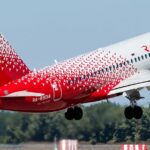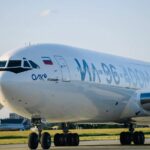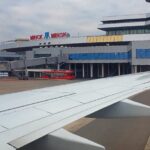The aviation industry is constantly evolving to meet the growing demand for travel and improve the passenger experience. One of the innovative approaches being discussed recently is virtual interlining, which opens the door to the creation of next-generation aviation hubs. What is virtual interlining?
Virtual interlining is a strategy where airlines collaborate with each other to create a network of routes without the need for direct codeshare agreements. Instead, they use technology solutions and digital platforms to integrate their schedules and book tickets, offering passengers seamless connections and a wide choice of routes.
Advantages of virtual interline
- Expanded route network. By partnering with other airlines, each airline can offer passengers access to more routes and destinations, increasing choice and flexibility in travel planning.
- Optimisation of resource utilisation. Virtual interlining allows airlines to optimise the use of their aircraft, filling routes with high demand and minimising flights with low utilisation.
- Reduced operational costs. By sharing resources and integrating airline booking systems, operating costs can be reduced, which can ultimately lead to lower ticket prices.
- Enhanced Passenger Experience. Travellers can enjoy more convenient and efficient connections, as well as access special offers and promotions offered through virtual interlining agreements.
Creating aviation hubs through virtual interlining
On the one hand, virtual interlining opens up new opportunities for airlines with different specialisations and regional coverage to interconnect their route networks and create next-generation air hubs. These hubs will function as connection centres, providing passengers with a wide choice of destinations and fast connections between flights.
On the other hand, virtual interlining enables technological innovations such as blockchain and artificial intelligence to optimise booking processes, resource management and air traffic safety.
Challenges and prospects
Despite the potential benefits, the adoption of virtual interlining and the creation of aviation hubs faces a number of challenges, including the technical complexities of booking system integration, competition from existing airline alliances and the need to comply with aviation regulatory requirements.
However, given the rapid advancement of technology and the aviation industry’s appetite for innovation, virtual interlining is a promising tool for improving the efficiency and accessibility of air transport. The creation of aviation hubs through virtual interlining may become the next stage in the evolution of aviation, opening up new opportunities for passengers and airlines around the world.
Russia and hubs in the new bipolar reality
The need for co-operation with airlines from friendly countries seems obvious. Sochi and Irkutsk can be considered as potential hubs.
Who is currently flying to Sochi? Uzbekistan Airways and Air Serbia. This is clearly not enough. We need to bring back Egyptian airlines and put a flight to Cairo, giving Sochi residents the opportunity to fly to Tanzania and South Africa with cheap Air Egypt flights. It is ideal to attract Air Tanzania for the Sochi-Zanzibar flight and Etihad for the flight to Abu Dhabi. We think that the Sochi-Phuket/Denpasar flight will also be in demand.
Given the growing shortage of capacity, it is extremely important to establish co-operation with friendly countries. Flights from Malaysia and Indonesia to Irkutsk will solve the problems of the entire eastern region of Russia with regard to winter holidays.
We should not hesitate to offer our friends all possible preferences and support the openness of the country in every possible way.
General Director of ATEO Air, expert on the aviation market of the Gulf and Middle East countries
Oleg Evdokimov
for the Russian Aviation website







